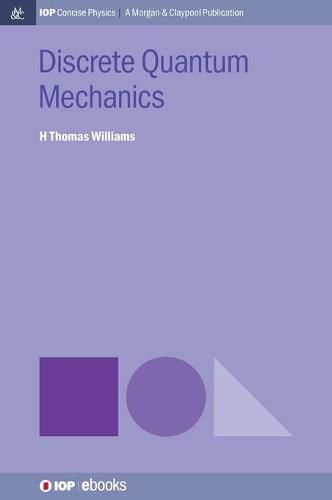Readings Newsletter
Become a Readings Member to make your shopping experience even easier.
Sign in or sign up for free!
You’re not far away from qualifying for FREE standard shipping within Australia
You’ve qualified for FREE standard shipping within Australia
The cart is loading…






This title is printed to order. This book may have been self-published. If so, we cannot guarantee the quality of the content. In the main most books will have gone through the editing process however some may not. We therefore suggest that you be aware of this before ordering this book. If in doubt check either the author or publisher’s details as we are unable to accept any returns unless they are faulty. Please contact us if you have any questions.
After a quarter century of discoveries that rattled the foundations of classical mechanics and electrodynamics, the year 1926 saw the publication of two works intended to provide a theoretical structure to support new quantum explanations of the subatomic world. Heisenberg’s matrix mechanics and Schrodinger’s wave mechanics provided compatible but mathematically disparate ways of unifying the discoveries of Planck, Einstein, Bohr and many others. Efforts began immediately to prove the equivalence of these two structures, culminated successfully by John von Neumann’s 1932 volume Mathematical Foundations of Quantum Mechanics. This forms the springboard for the current effort. We begin with a presentation of a minimal set of von Neumann postulates while introducing language and notation to facilitate subsequent discussion of quantum calculations based in finite dimensional Hilbert spaces. Chapters which follow address two-state quantum systems (with spin one-half as the primary example), entanglement of multiple two-state systems, quantum angular momentum theory and quantum approaches to statistical mechanics. A concluding chapter gives an overview of issues associated with quantum mechanics in continuous infinite-dimensional Hilbert spaces.
$9.00 standard shipping within Australia
FREE standard shipping within Australia for orders over $100.00
Express & International shipping calculated at checkout
This title is printed to order. This book may have been self-published. If so, we cannot guarantee the quality of the content. In the main most books will have gone through the editing process however some may not. We therefore suggest that you be aware of this before ordering this book. If in doubt check either the author or publisher’s details as we are unable to accept any returns unless they are faulty. Please contact us if you have any questions.
After a quarter century of discoveries that rattled the foundations of classical mechanics and electrodynamics, the year 1926 saw the publication of two works intended to provide a theoretical structure to support new quantum explanations of the subatomic world. Heisenberg’s matrix mechanics and Schrodinger’s wave mechanics provided compatible but mathematically disparate ways of unifying the discoveries of Planck, Einstein, Bohr and many others. Efforts began immediately to prove the equivalence of these two structures, culminated successfully by John von Neumann’s 1932 volume Mathematical Foundations of Quantum Mechanics. This forms the springboard for the current effort. We begin with a presentation of a minimal set of von Neumann postulates while introducing language and notation to facilitate subsequent discussion of quantum calculations based in finite dimensional Hilbert spaces. Chapters which follow address two-state quantum systems (with spin one-half as the primary example), entanglement of multiple two-state systems, quantum angular momentum theory and quantum approaches to statistical mechanics. A concluding chapter gives an overview of issues associated with quantum mechanics in continuous infinite-dimensional Hilbert spaces.